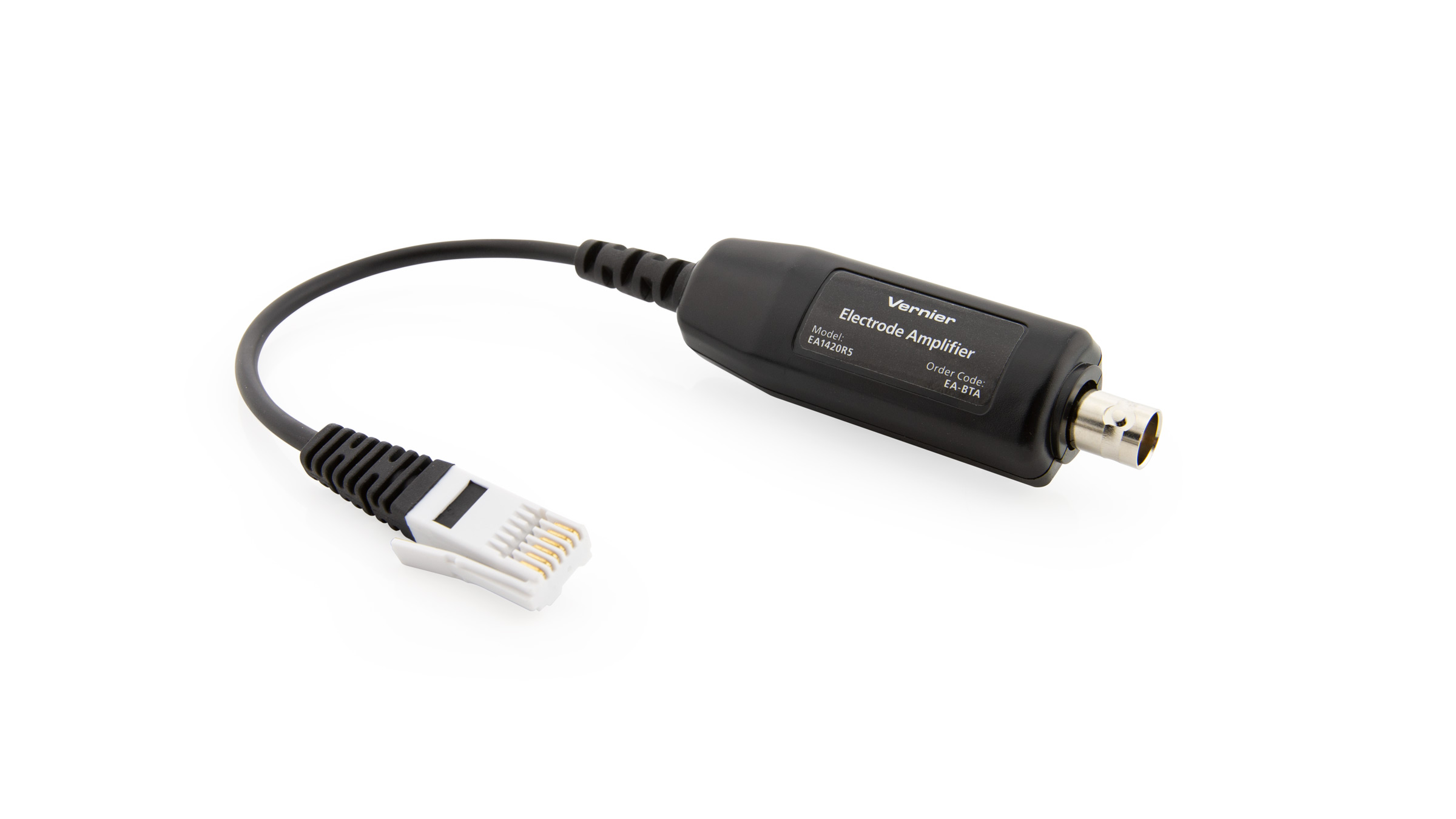Troubleshooting
- Primary Test: Connect an ORP sensor or a pH sensor to the Electrode Amplifier and connect the Electrode Amplifier to a Vernier interface. Start the data-collection program. Place the ORP sensor or pH sensor in a buffer solution of known pH and confirm that the readings are within range.
- Secondary Test: Confirm that the BNC connection is secure.
Additional Troubleshooting
- Can I use my third-party ISE with my Vernier equipment?
- During calibration, what are the typical potential output readings for the PH-BNC electrode?
Specifications
- Power: 7 mA @ 5VDC
- Input: range –450 mV to +1100 mV
- Impedance: 100 MΩ
- Gain: 2.2 V/V
- Offset: 1.20 V (nominal)
Calibration
Calibrate? Normally, yes. However, it depends on the electrode that is connected.
The Electrode Amplifier amplifies the voltage produced by an electrode into a range where it can be monitored by the lab interface. The Electrode Amplifier will report values in units of millivolts. If a pH electrode is attached, however, you can choose to read in units of pH. Custom, linear 2-point calibrations can also be performed if desired. For more information, see How do I calibrate my sensor?
Supported Electrodes
- pH Electrode BNC (
PH-BNC ) - Flat pH Electrode BNC (
FPH-BNC ) - Glass-Body pH Electrode BNC (
GPH-BNC ) - ORP Electrode BNC (
ORP-BNC ) - Ammonium Ion-Selective Electrode BNC (
NH4-BNC ) - Calcium Ion-Selective Electrode BNC (
CA-BNC ) - Chloride Ion-Selective Electrode BNC (
CL-BNC ) - Potassium Ion-Selective Electrode BNC (
K-BNC ) - Nitrate Ion-Selective Electrode BNC (
NO3-BNC )
Products with Electrode Amplifier Included
- Tris-Compatible Flat pH Sensor (
FPH-BTA ) - ORP Sensor (
ORP-BTA ) - Ammonium Ion-Selective Electrode (
NH4-BTA ) - Calcium Ion-Selective Electrode (
CA-BTA ) - Chloride Ion-Selective Electrode (
CL-BTA ) - Potassium Ion-Selective Electrode (
K-BTA ) - Nitrate Ion-Selective Electrode (
NO3-BTA )
Related Products
- Go Direct® Ion-Selective Electrode Amplifier (
GDX-ISEA ) - Go Direct® Electrode Amplifier (
GDX-EA )


